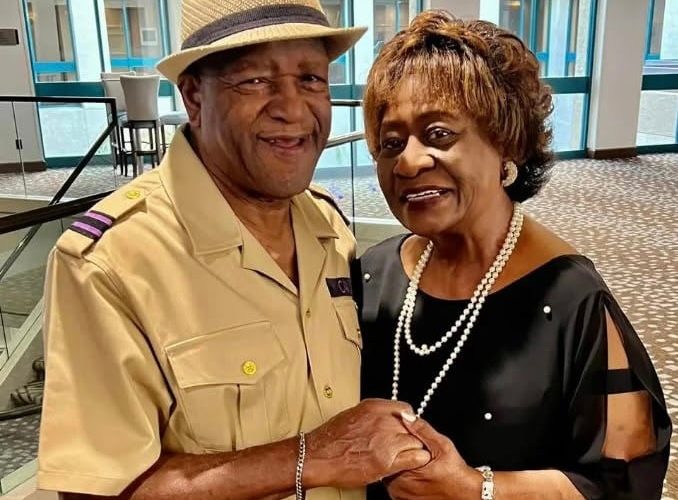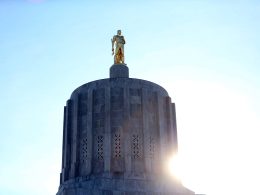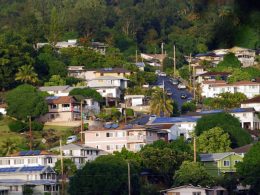Few people believe 85-year-old Bob Boyer when he says he is retired. The well-known labor organizer from Portland, who has mended vehicles, worked on rail yards and ports, and patched up houses for rent, claims that volunteering for charity organizations has matured him.
Boyer, who was transferred to Portland in 1961 as a communications specialist and engineer in the U.S. Air Force at the age of 22, stated, “This city has been very good to me.”
Boyer envisaged his future in Portland, despite the fact that only 2% of the metro area’s population was Black like him and that his hometown of Philadelphia had more citizens than the entire state of Oregon at the time.
The former boxer from West Philadelphia went on to become a state senator from Oregon and a tireless community activist. Boyer’s favorite job these days is helping young men and women learn construction skills through a pre-apprenticeship program in Portland called Constructing Hope.
In the 1960s, Boyer recalls earning $2.96 per hour; today, trainee electricians might make $35 per hour.
He said that was progress.
Boyer and his 75-year-old wife, Judy Knawls Boyer, attended the celebration of the new Black Cultural Center at the North Portland Library on Saturday. Judy was asked to talk on the couple’s history of supporting historic resource centers and libraries.
Meetings of the A. Philip Randolph Institute, a group for African-American trade unionists, brought the pair together in 1978. He made sure she had his phone number because she was the secretary of the local organization and he was going to be the chapter president soon.
They were really similar. According to Judy, they were both hardworking single parents who valued education. In addition to building their property management company, serving on union boards and organizations, and taking care of their family, they never took a vacation after getting married in 1981.
They were laughing so much on a 1999 cruise that many mistakenly believed they were newlyweds.
Judy was drawn to Bob Boyer’s confidence and optimism right away. According to Judy, who was semi-retired in 2014 when she began serving as president of AARP North-Northeast Portland to advocate for Oregonians over 50 and their families, he is 5′ 7″ and unabashedly deliberate and purposeful.
She stated her husband will listen, share his thoughts, and bring in individuals with strong ideas to fix a problem, whether it’s a family gathering or a public assembly. She said, “He’s a good recruiter.”
Just by being in the room, he wins people over.
Public service
As a result of President Lyndon Johnson’s Great Society and War on Poverty programs in the 1960s, Boyer was a member of the board of Portland’s Model Cities program.
When the civil rights group hosted its national conference in Portland in 1978, he served as vice president of the NAACP Northwest Region.
Additionally, in 1989, he was a member of a coalition that renamed the 99 East commercial area, Northeast Union Avenue, Martin Luther King Jr. Boulevard in honor of the civil rights activist.
A feature of Bob Boyer, who helped found and run the Northeast Coalition of Neighborhoods, in the Concordia Neighborhood Association newsletter states that there haven’t been many events in recent Northeast history where Boyer wasn’t involved in some way.
He has been successful in forming both political and personal alliances thanks to his discipline, diplomacy, and strong belief that individuals can make a difference.
When he first met Boyer, U.S. Senator Jeff Merkley was a resident of Northeast Portland in the early 1990s. Merkley told The Oregonian/OregonLive, “I got to know Bob as a fighter for working families and racial justice.
Bob has demonstrated to us all how to use the power of our voice to uplift others, Merkley said, from establishing historic and varied neighborhood associations that ignite genuine change to bolstering unions and advocating for Black community members to have a seat at the table. He has strengthened northeast Portland and the state as a whole.
Boyer was also commended by Merkley for carrying out the remainder of the late state senator Bill McCoy’s 1996 term. Boyer made the decision not to run for office the following year. In Portland, he liked doing hands-on labor.
Boyer claimed that upon arriving in Oregon, he was unable to locate another individual with his last name in the state’s phone books. The Boyers are now in their fifth generation.
The majority of the twelve grandchildren, fifteen great-grandchildren, and two great-great-grandchildren in Bob and Judy Boyer’s mixed family of six now reside in the Portland region.
Bob Boyer took business management classes at Marylhurst University while volunteering and working as a foreman at Southern Pacific Railroad. At age 32, he received his bachelor’s degree.
His wife, daughter, and granddaughter all graduated from Concordia University, where he later held the position of regent.
The Boyers all wore shirts that read “Family is Love” while they were at a bowling event.
Road to Portland
The National Association for Black Veterans chapter in Portland, managed by Bob Boyer, met in the Billy Webb Elks Lodge in the Eliot district of North Portland.Thanks to Bob Boyer
On Thanksgiving Day in 1939, Bob Boyer was born in Philadelphia, disrupting his mother Leola Boyer’s vacation time as a $5-per-day maid. The two spent time together listening to radio shows when he was younger.
His passion in math, physics, and developing electronics, together with his childhood pastime of testing cathode-ray tubes, inspired him to pursue engineering training after joining the U.S. Air Force in 1959.
Before being moved to Portland, he served as a communications specialist at a radar site in Southwest Texas and then a top-secret location in British Columbia, Canada.
He participated in high hurdles competitions, ran track, and trained as a boxer in high school under the North Philadelphia Police Athletic League’s (PAL) youth development program. He claimed to have learnt that a champion doesn’t win, in or out of the ring, without training while there, where he met Joe Frazier, Sonny Liston, James Bonecrusher Smith, Tim Witherspoon, and Larry Holmes.
As a teenager, I enjoyed doing doo-wop, but my dream was to be an athlete, Boyer told The Oregonian/OregonLive. In order to become a professional fighter, I trained for six years.
The math-minded kid was informed by Frazier’s manager that if he like electronics, he should pursue that as a career, but that being a boxer would come with costs, including both financial and physical suffering.
Boyer continues to employ metaphors from sports today. “I view challenges as obstacles,” he stated. The most pressing issue must be overcome first.
A buddy took Bob Boyer to the Billy Webb Elks Lodge, the social hub of Portland’s Black community in the Albina district, in 1961, sparking the start of his lengthy career of getting his hands dirty and moving Portland forward.
The building at 6 N. Tillamook St. was previously the Williams Avenue YWCA, a segregated branch of the Portland YWCA and USO Center for African Americans during World War II. Two years prior, the building had been purchased by an African American fraternal organization for men and women, which is a part of the Improved Benevolent and Protective Order of the Elks of the World.
The Portland NAACP, Oregon Federation of Colored Women’s Clubs, the Urban League of Portland, and the Congress of Racial Equality (CORE) met in the 1926 structure, which is currently undergoing restoration after being damaged in a fire in 2021.
Boyer led meetings there for Portland s National Association for Black Veterans to help those who served receive their earned benefits.
Boyer said that the Elks was the location. Ten World War II Tuskegee Airmen were billeted here.
Deborah Roache, a second generation member of the Billy Webb Elks Lodge and the lodge s Daughter Ruler, said she has learned a lot about the history of Portland from Boyer.
She claimed that he is a steadfast individual with an infinite amount of information. He is eager to contribute in any way he can and wants the narrative to be shared. This town is truly blessed by that man.
Here is Oregon: Southern Oregon
-
Artist from Botswana teaching in Ashland creates to explain the meaning of home
-
These Oregon festivals and art scenes are nominees for best in the U.S.
-
Pollinator garden brings flowers, color and life to southern Oregon home rebuilt after fire
-
Florists and growers make it easy to buy Northwest flowers for Valentine s Day
Janet Eastman writes on trends and design. You can follow her on X@janeteastman and contact her at 503-294-4072 and [email protected].









